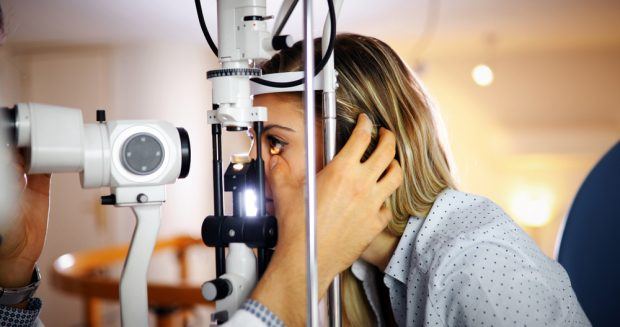As you age, your ability to read without reading glasses diminishes. Orasis Pharmaceuticals is working on an eye drop as an alternative to using reading glasses.
We spoke to Elad Kedar, CEO of emerging ophthalmic pharmaceutical company Orasis Pharmaceuticals, about an innovative pharmacological treatment for presbyopia, the gradual loss of the eyes’ ability to focus on nearby objects: an eye drop to serve as an alternative to reading glasses.
What is presbyopia?
According to Elad Kedar, this is a natural condition that happens to most people.
“It’s part of aging, unfortunately. Simply put, presbyopia is the diminishing ability to focus on near-objects.”

Presbyopia usually starts occurring after the age of 40, when the crystalline lens of the eye gradually stiffens and loses flexibility.
A two billion-people challenge
There are almost two billion people globally, and more than 120 million people in the US, living with presbyopia. Individuals with presbyopia experience blurred vision when performing daily tasks that require near visual acuity, such as reading a book, a restaurant menu or messages on a smartphone.
“Presbyopia cannot be prevented or reversed, and it continues to progress gradually. Existing treatment options are often cumbersome or invasive, presenting a significant unmet need for quality-of-life improvement for people with presbyopia.”
The lens in our eyes gradually loses its flexibility. For many, this usually happens around the age of 45. Thereafter, it becomes difficult for most to focus on near-objects. This is when we need to start using aids for our near vision, and, to date, the most common aid for near vision is wearing reading glasses.
Will you really be able to throw out your reading glasses?
Kedar explained: “Our goal is to create an alternative to reading glasses that gives patients the freedom to choose how they manage their near vision. The eye drop Orasis is developing works differently from reading glasses, with a different, but well-established mechanism.”
The eye drops achieve a pinhole effect
“Reading glasses, primarily, are magnifiers. Our drops work on a completely different area, through a principle called pupil modulation (pupil reduction). So, rather than dealing with the lens, we‘re dealing with the pupil, which, in optical terms, is the aperture of the eye. Our drop creates a limited constriction of the pupil, achieving what is called a pinhole effect. This is what allows the potential to temporarily gain back near vision while maintaining your distance vision.”
Safety of the drop
After years of research, trials, testing and future potential approval of these eye drops, patients will soon get the latest, greatest and safest innovations in eyecare. Given the work and research done by Orasis, it seems likely that a novel treatment regimen will be available to eyecare practitioners in the near future.
When will the eye drop be released to market?
Orasis Pharmaceuticals is currently focused on completing ongoing Phase III trials, with the data readout for these studies anticipated in the coming months.
About ELAD KEDAR
 Elad Kedar is the Chief Executive Officer, Orasis Pharmaceuticals. He has nearly 20 years of executive experience in the pharmaceutical industry, developing and growing healthcare organizations. His experience includes holding a variety of senior positions across different geographic locations and business environments, such as CFO of Eli Lilly South-East Europe and founder of PharmaSwiss Israel. Mr. Kedar brings his leadership and expertise to all stages of the pharmaceutical life cycle. From clinical development to commercialization. Mr. Kedar holds an MBA from INSEAD and a BA in accounting and law from Tel Aviv University.
Elad Kedar is the Chief Executive Officer, Orasis Pharmaceuticals. He has nearly 20 years of executive experience in the pharmaceutical industry, developing and growing healthcare organizations. His experience includes holding a variety of senior positions across different geographic locations and business environments, such as CFO of Eli Lilly South-East Europe and founder of PharmaSwiss Israel. Mr. Kedar brings his leadership and expertise to all stages of the pharmaceutical life cycle. From clinical development to commercialization. Mr. Kedar holds an MBA from INSEAD and a BA in accounting and law from Tel Aviv University.



![women [longevity live]](https://longevitylive.com/wp-content/uploads/2020/01/photo-of-women-walking-down-the-street-1116984-100x100.jpg)










